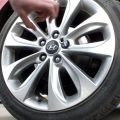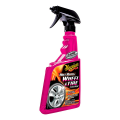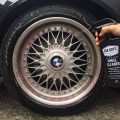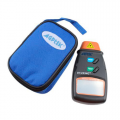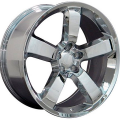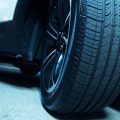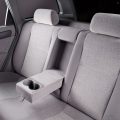How To Measure Rims Offset? A Beginners Guide

There are several things to consider when purchasing a new set of wheels for your car. Factors like size, style, offset, backspacing among others. These factors can influence the performance of your car. However, one of the most important factors is the wheel offset. Have you ever come across the word “offset” and wonders what it means? Well, this is a beginner’s guide dedicated to helping you have better understand “how to measure the offset” of your wheel. To fully understand wheel offset, you must know some basic facts about wheel assembly. The offset of a car describes the wheel’s best position so that it can rotate freely without brushing the fender, vehicle components or the brakes.
The offset of a wheel is determined by measuring the distance between its centerline and the mounting surface. If the offset of a wheel is not correct, handling can be affected. The standard unit to describe the offset of a wheel is millimeters, which can be negative, positive or zero. By knowing the measurement, you can easily maintain the original measurement when replacing your rims. This will assist you in avoiding steering difficulties and wheel bearing fatigue.
Items required to measure wheel offset:
- Tape measure
- Straight edges like wood or metal
- Wheel (rim)
Easy and quick guide for measuring Rims Offset
Place a straight edge like wood or metal from edge to edge to get the overall width of the wheel. Record the measurement. This method is best for a non-mounted wheel, and it also offers the most accurate result.
Assuming tire is still mounted on the rim, lay the rim face down on a flat surface place a straight edge like wood or metal across the rim top. Measure the distance from the ground, all the way up through the spokes to the straight edge like wood or metal you ‘ve placed at the top. Record the measurement.
Divide the recorded measurement above by two. For example, if the number you got using a ruler with millimeter indicators is 260. Divide the number by two to get 130. The number (130) is the rim centerline measurement, which you will later use.
Conversely, If you are using a standard tape for your measurement and you got a figure like 10 1/4 inch. Converting this figure is easy and straightforward. To convert, multiply the figure by 25.4 i.e. 10.25 x 25.4 = 260.35 then round up to 260. Divide by two and record the number (130).
The next step is to lay the wheel down on a flat surface. Use your measuring tape to obtain the distance from the hub mounting surface to the rim’s rear edge. Make sure your ruler is correctly placed. Assuming the result gotten is 171. The result (171) is also known as your Backspacing.
The final step is the calculation. Now subtract the rim centerline measurement (130) from the Back Spacing (171). 171-130 = 41
The result (41 mm) is your wheel/rim offset.
Note:
It’s possible you get a positive, negative or zero result. In other words, you can get a negative offset, positive offset, or a zero offset.
The meaning
Positive offset occurs when the mounting surface extending toward the centerline or wheel side. Usually common in new or front wheel cars/
Negative offset occurs when the mounting surface falls towards the rim centerline.
Zero offset occurs when the mounting surface lies even or lines up with the rim centerline.
The problem associated with too much positive offset
- Poor handling
- Interference with brake parts
- Tire rubbing against the bodywork or suspension
The problem associated with too much negative offset
- Poor handling
- Increased steering wheel kick-back
- Additional stress on the entire suspension
Conclusion
As you can see, getting the rim offset is quite easy and straightforward. You don’t need a professional or a mechanic to measure the offset of your rim. Follow the steps above, and you will get the actual offset for your car. Getting the offset of your wheel is essential, using the wrong offset can have an adverse effect on handling while the tire may rub against the fender, brakes and other body parts. By knowing the measurement, you can easily maintain the original measurement when replacing your rims. This will assist you in avoiding steering difficulties and wheel bearing fatigue.


